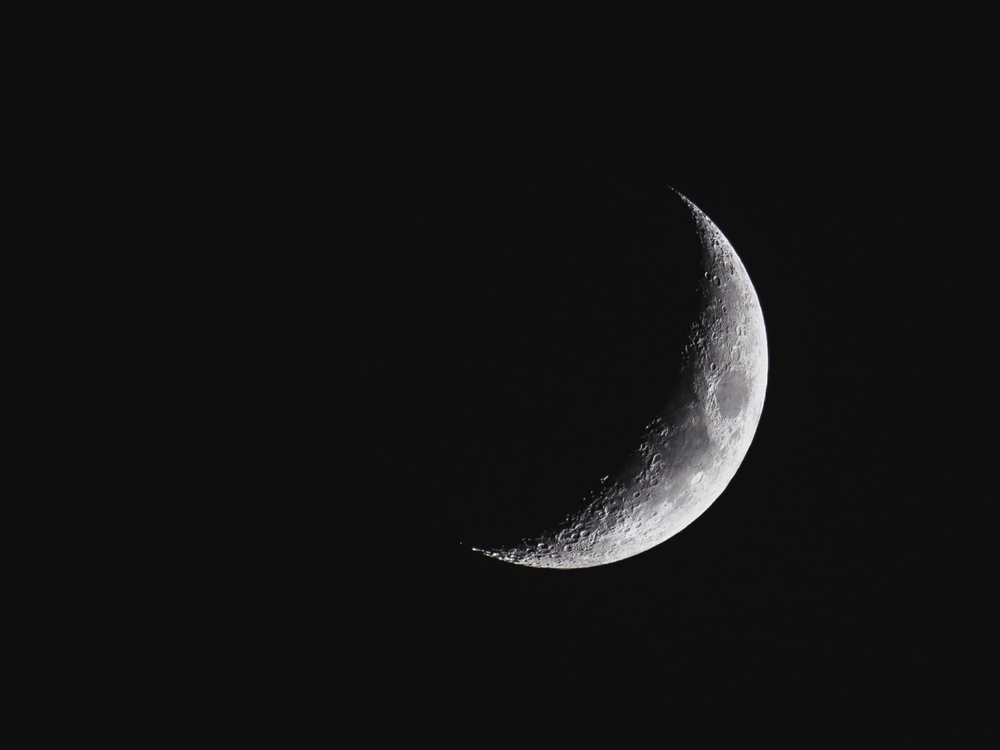There’s No Wind or Rain On The Moon, But There Are Extreme Temperatures
Posted on Categories Discover Magazine

We’re interested in the moon because it’s close enough to Earth to allow us to practice setting up a base camp in preparation for Mars. In fact, Artemis III will send the first crewed spacecraft to the moon’s South Pole to set up camp by 2034.
And while there’s still a lot that we don’t know about living on the moon, we do know a little something about its weather forecast, says Jason Steffen, a professor of physics and astronomy at the University of Nevada, Las Vegas.
“There’s not weather on the moon in the same way that we imagine it on Earth because the moon doesn’t have the same type of atmosphere as Earth,” says Steffen.
The Moon’s Atmosphere
An atmosphere is a layer of gases that blankets a planet and is held in place by gravity. While there is a slight atmosphere on the moon, it doesn’t compare to that of Earth, and therefore, there is nothing to keep the gases that would cause weather patterns in place.
“The particles aren’t trapped by the moon’s gravity,” says Steffen. This means that they might hang out for a little bit, but the tenuous nature of the atmosphere means that they will eventually escape.
The moon might capture some weather from the solar wind — a line up of charged particles released from the Sun’s outermost atmospheric layer — but even the slow-moving particles will eventually escape because there’s nothing holding them in place, and it’s not enough to carry heat from one side of the moon’s surface to the other.
Read More: Earth’s Moon: The Basics of its Origin, Evolution and Exploration
What Is the Temperature on the Moon?
Since weather particles aren’t able to stick around, this means that the day-lit side of the moon is unbearably hot, reaching temperatures up to 250 degrees Fahrenheit, and the dark side of the moon is unbearably cold, dropping to -208 degrees Fahrenheit. The thin atmosphere means that the heat from the day-lit side can’t be circulated to the moon’s dark side. By comparison, because of gravity and a much thicker atmosphere, the temperature on Earth’s surface is fairly regulated.
There’s also no gradual change in the temperature as it moves from light to dark. “It pretty much instantaneously goes from cold to hot,” says Steffen. The moon’s day, or how long it takes to orbit around the Earth, is around 30 days.
However, there’s a line that separates the day-lit and dark side called the Terminator, a line that’s a few hundred miles wide where there is some temperature gradient simply because of the angle that the Sun hits the moon.
Read More: Winter May Seem Cold, But It’s Nothing Compared To Outer Space
How to Prepare for Weather on the Moon
The extreme state of temperature on the moon means that anyone who lives there, at the South Pole or elsewhere would need constant temperature control to be either heated up on the dark side or cooled down on the day-lit side.
“Since there’s not a thick atmosphere, you’re basically carrying your climate with you,” says Steffen.
Every part of human inhabitation would have to include climate control. For example, the base camp itself would likely be covered in mylar to reflect sunlight and reduce the level of temperature control required. The spacesuits that astronauts wear on the Moon would also include climate control and block radiation.
When it comes to the weather forecast, Earth is undoubtedly the most interesting because of its biodiversity and its atmosphere, which holds particles, but there are other planets and moons with some meteorological excitement.
Mars’s atmosphere is mostly carbon dioxide, and the shape of its orbit means that it crosses the line where carbon dioxide freezes and another where it turns gaseous, which helps to create huge dust storms that sweep across the planet. Other moons, like Titan, have a hydrological cycle that causes rain and creates erosion similar to Earth’s, except it’s methane, not water, that cycles through.
So, if you’re planning a trip to the moon, pack for the cold and hot. Unfortunately, there’s not very much in between. And don’t worry about a raincoat or an umbrella because the moon does not experience weather or precipitation like rain and snow.
Read More: Here Are 4 Reasons Why We Are Still Going to the Moon
Article Sources
Our writers at Discovermagazine.com use peer-reviewed studies and high-quality sources for our articles, and our editors review for scientific accuracy and editorial standards. Review the sources used below for this article:
Sara Novak is a science journalist based in South Carolina. In addition to writing for Discover, her work appears in Scientific American, Popular Science, New Scientist, Sierra Magazine, Astronomy Magazine, and many more. She graduated with a bachelor’s degree in Journalism from the Grady School of Journalism at the University of Georgia. She’s also a candidate for a master’s degree in science writing from Johns Hopkins University, (expected graduation 2023).